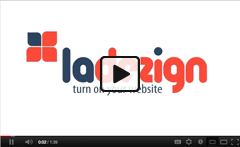Traffic Tuesdays
Words Blog 2: Keep It Simple

- 1. Be as clear as possible about the purpose of your website and the intended clients or customers you plan to attract. People in different demographics are engaged by different visual and organizational strategies.
- 2. Communicate your understanding of your clients and your purpose clearly to your website designer. Ask how individual elements contribute to your story and work with the designer to get both the story and the look of your website right.
- 3. Ask friends, colleagues and associates to look over the website while it is in development or when you plan to redesign your website. When we work on a big project like a website, over time, we see what we expect to see and can miss glaring issues or errors. Someone who has not invested that time and energy may quickly see something that you have missed.
- 4. Your website has to tell your story in layers. The Home Page is the introduction and guide to the major "chapters" in your story: the major sections of your website.
- 5. Give a lot of thought to how you organize the website, what the major links are and how each section tells a part of your story. Be sure the major sections of your website fit together and tell the whole story. It's easy to miss an important part of the story and then try to backpedal on later pages to make up for it.
P.S. Don't forget to subscribe below to this blog.
 About Jason Ciment
About Jason CimentFormerly an attorney and CPA, Jason has been working online since 1997. His columns on affiliate marketing can still be found on www.Clickz.com and his book on search engine optimization can be found at www.seotimetable.com.
This blog is published 4x per week and covers website design and SEO tips as well as a wide range of tips and advice for working and living online more efficiently and enjoyably.
-
Latest Blog Posts
- How to Evaluate Google Adwords Performance
- A study of RyanAir shows how SEO results are affected by 404 errors
- Averting Stock Market Freefall. A study on CSOD
- Words Blog 45: Auditing Your Website
- Words Blog 44: Know What's on Your Website Seo Resources
- What is SEO?
- Frequent SEO questions
- Optimization checklist
- Why we're good at SEO
- Web design tips Seo Case Studies
- AbsoluteMed.com
- ArtisanPrecast.com
- GrandpasCoffeeCakes.com








